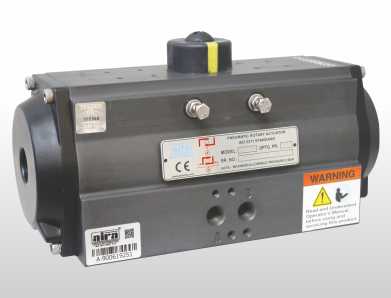If you’re looking for a way to improve the efficiency of your business, a pneumatic rotary cylinder may be the answer. In this blog post, we’ll explore the benefits of using a pneumatic rotary cylinder, as well as some factors to consider when choosing one. We’ll also introduce you to some of the top manufacturers of pneumatic rotary cylinders.
Introduction
A pneumatic rotary cylinder is a type of mechanical device that uses compressed air to create a rotating force. It is often used in applications where a high degree of torque is required, such as in automotive and aerospace engineering.
Pneumatic rotary cylinders have many advantages over other types of mechanical devices. For example, they are much more compact and lightweight than electric motors, and they can be used in environments where explosive fumes are present. Additionally, pneumatic rotary cylinders are very efficient; they can convert up to 90% of the energy from compressed air into usable mechanical energy.
There are many different types of pneumatic rotary cylinders, each with its own set of benefits. In this article, we will discuss the three most common types: single-acting, double-acting, and servo-controlled.
What is a pneumatic rotary cylinder?
A pneumatic rotary cylinder, also known as an air-powered rotary actuator, is a device that uses compressed air to generate linear or rotary motion. The cylinder consists of a piston that is connected to a crankshaft via a connecting rod. The crankshaft converts the reciprocating motion of the piston into rotary motion.
Pneumatic rotary cylinders are used in a wide variety of applications, including but not limited to: automotive manufacturing, food and beverage processing, packaging, and material handling. Their main advantage over other types of cylinders is that they can be used in applications where high force or torque is required. Additionally, pneumatic rotary cylinders are more resistant to shock and vibration than their hydraulic counterparts.
There are two main types of pneumatic rotary cylinders: single-acting and double-acting. Single-acting cylinders generate linear or rotary motion in one direction only, while double-acting cylinders generate linear or rotary motion in both directions. Single-acting cylinders are typically used for light-duty applications, while double-acting cylinders are used for heavy-duty applications.
How can a pneumatic rotary cylinder benefit your business?
A pneumatic rotary cylinder can offer several advantages and benefits for businesses, depending on the industry and application. Some potential benefits include:
Improved efficiency: Pneumatic rotary cylinders are more efficient than hydraulic cylinders, as they use less energy to generate the same amount of force or torque. This can lead to reduced operating costs and increased productivity.
Greater precision: Pneumatic rotary cylinders offer greater precision than hydraulic cylinders, making them ideal for applications that require tight tolerances.
Higher force output: Pneumatic rotary cylinders can generate higher force output than hydraulic cylinders, making them suitable for heavy-duty applications.
Improved resistance to shock and vibration: Pneumatic rotary cylinders are more resistant to shock and vibration than hydraulic cylinders, making them ideal for use in harsh or demanding environments.
Considerate factors when choosing a rotary cylinder
There are a few key considerations to keep in mind when selecting a pneumatic rotary cylinder for a particular application. First, it is important to determine the required force or torque output. This will help to narrow down the field of potential cylinders, as there are models available with a wide range of force and torque capabilities.
Next, it is necessary to consider the operating environment. Pneumatic rotary cylinders are designed to withstand harsh conditions, but some models may be better suited for certain applications than others. For example, if the application will expose the cylinder to high temperatures, it is important to choose a model that is specifically rated for use in such an environment.
Finally, it is important to take into account the space constraints of the application. Pneumatic rotary cylinders come in a variety of sizes, so it is important to select one that will fit into the allotted space. Additionally, some models can be mounted in different orientations, so it is important to consider whether this is a requirement of the application.
Some of the top manufacturers of pneumatic rotary cylinders
Some of the top manufacturers of pneumatic rotary cylinders include:
Airtac: A Taiwanese company that offers a wide variety of pneumatic products, including rotary cylinders. Airtac’s cylinders are available in both single- and double-acting models and can be customized to meet the specific needs of the application.
Norgren: A leading global manufacturer of pneumatic and fluid control products, Norgren offers a wide range of rotary cylinders for a variety of applications. Norgren’s cylinders are available in both metric and imperial sizes and can be configured with either rodless or rod-end mounting.
Festo: A German company that specializes in the manufacture of pneumatic and electromechanical components. Festo offers a wide range of rotary cylinders, including compact models for applications where space is limited. Festo’s cylinders are available in both single- and double-acting models and can be equipped with a variety of end caps and mounting options.
How to get the most out of your rotary cylinder
There are a few key things to keep in mind when using a pneumatic rotary cylinder to get the most out of it. First, make sure the air pressure is set correctly. Too much or too little pressure can lead to subpar performance. Second, pay attention to lubrication. Proper lubrication is essential for keeping the moving parts of the rotary cylinder in good condition and extending its lifespan. Third, be mindful of the environment in which the rotary cylinder will be used. extreme temperatures, dust, and other contaminants can all cause problems for pneumatic cylinders.
When used correctly, pneumatic rotary cylinders can provide many years of reliable service. By following the tips above, you can help ensure that your rotary cylinder will perform at its best and provide optimum results for your application.

